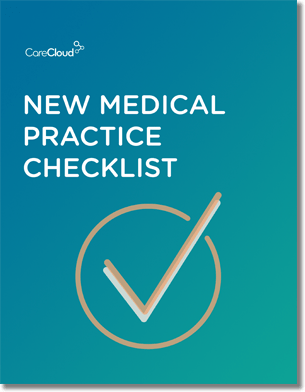Introduction:
SOAP notes are a way of recording patients’ encounters in healthcare. SOAP is an abbreviation of Subjective, Objective, Assessment, and Plan. This format enables the clinician to put down and pass on information about the patient in a standard and understandable manner.
SOAP notes are crucial since they help improve communication between healthcare professionals, thus providing the correct and complete information about the patient. They are helpful in in-patient care as they minimize the making of mistakes, enhance proper decision-making, and encourage teamwork.
This article examines the history behind SOAP notes and how they can be applied in modern practices.
HOW SOAP NOTES PAVED THE WAY FOR MODERN MEDICAL DOCUMENTATION
Contrary to the impression projected by certain health IT companies, interconnectivity is not a novel concept at all. EHRs, for instance, have long been part of the healthcare system to allow patient information sharing among providers. Still, the push for improved physician communication has been an idea for years. SOAP notes make a perfect example.
Today, most caregivers use subjective, objective assessment plan (SOAP) notes to document patient information in their medical records. It offers providers a universal, systematic, and readable format to file and share information.
The Integration of SOAP Notes in Modern Healthcare Practices
The SOAP note has contributed significantly to several modern healthcare practices. The Electronic Health Record (EHR) systems for electronic documentation of patient information also employ the SOAP note format. This means that the healthcare givers can quickly feed in and get information on patients, enhancing the flow of information and patient management.
Physicians today cannot avoid using electronic health records with a SOAP note template creation program. The best-designed EHRs facilitate documentation by combining form-based and narrative-based functions that allow users to select symptoms or manually enter data quickly.
Notes on the usage of SOAP
These are divided into four parts, which must be followed step by step to complete a patient’s note.
-
Subjective (S)
The Subjective part contains the data given by the patient, e.g., anamnesis, complaints, and apprehensions. It portrays the patient’s perception of their state and informs further examination and treatment.
-
Objective (O)
The Objective section presents quantifiable information obtained by the clinician, such as the patient’s physical state, hemodynamic status, and laboratory parameters. It gives evidence, data, and findings that are real and can be seen in practice to inform clinical practice.
-
Assessment (A)
The Assessment section is where the clinician uses the Subjective and Objective data to formulate a diagnosis or recognize any illness. It reviews the patient’s condition and their response to the offered management.
-
Plan (P)
The Plan defines what has to be done further to the patient, what kind of treatment, when the next visit is, to which specialist to refer, and what to tell the patient. It provides a straightforward way of handling the patient’s future status.
The Evolution of SOAP Notes
When Dr. Lawrence Weed conceptualized SOAP notes in the 1970s, it revolutionized medical documentation. Medical professionals had no standardized form of recording patients’ data before it was formally launched. This was a problem because it created inconsistencies between clinicians and made healthcare inefficient.
SOAP Notes: Structure and Impact
A standardized approach makes things more precise and consistent and ensures quality improvements in healthcare provision. By having all necessary details recorded systematically, SOAP notes reduce the chances of errors and omissions occurring during clinical practice. This has been particularly useful in interdisciplinary contexts where multiple professionals need uniformity and accuracy concerning their patients’ backgrounds.
Integration with Electronic Health Records (EHRs)
The transition from paper-based SOAP notes to electronic formats within Electronic Health Records (EHRs) has made medical documentation more efficient. With SOAP templates, EHR systems allow easy input, access, and data distribution. There are always drag-and-drop features on these systems, and it is possible to customize them, enabling the providers to modify them according to the organization’s needs.
Interconnectivity among healthcare providers is also one element that EHRs have improved. Rapid retrieval and sharing of patient records ensure that all members of the health care team are well acquainted with patients’ conditions, thus promoting coordinated and comprehensive care. Particularly in managing chronic conditions where continuity of care is vital, this becomes even more important.
The Continued Relevance of SOAP Notes
SOAP notes provide a structure for documenting clinical encounters and help capture necessary information while communicating it effectively. As healthcare evolves, the legacy of SOAP notes endures, emphasizing systematic documentation that ensures quality patient care.
Conclusion:
In conclusion, SOAP notes have greatly improved inter-physician communication, enhanced the accuracy and efficiency of patient care, and laid the foundation for developing advanced EHR systems. As healthcare progresses, the principles of SOAP notes will continue to play a vital role in shaping the practice of medicine.

Do you know what you need when setting up a new medical practice?



